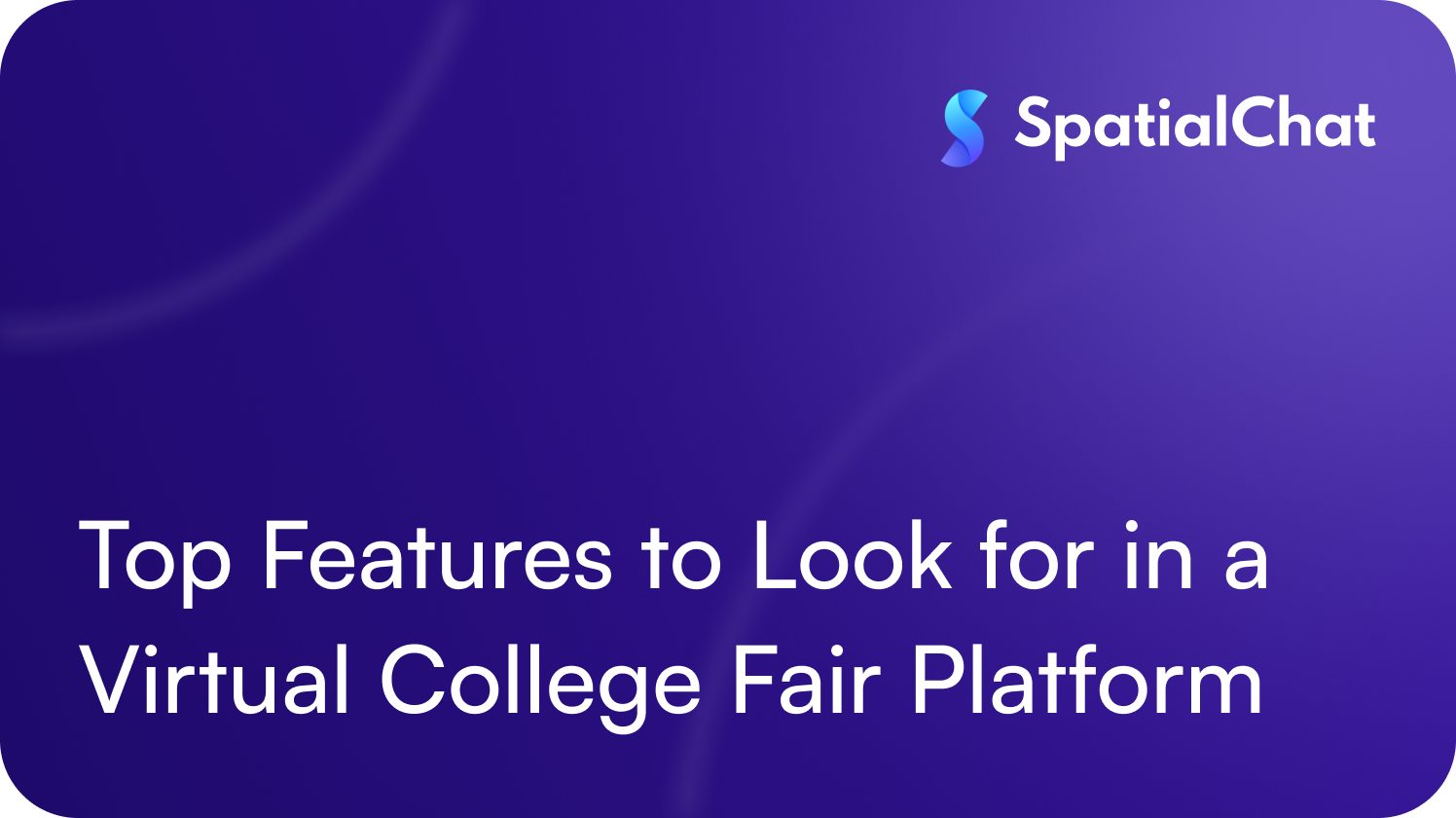The way students explore higher education options has changed dramatically. Today, virtual college fairs are no longer a backup plan, but a mainstream tool for connecting students with admissions representatives in a meaningful way. But not all virtual event platforms are created equal. To ensure your fair is engaging, informative, and effective, it’s important to choose software with the right features.
The goal of any virtual fair is simple: foster genuine interaction between colleges and students. The right platform should make that process seamless, while also offering organizers the tools they need to deliver a polished and impactful event. Here are ten must-have features that make all the difference.
A Strong First Impression: Event Landing Page
Every successful event begins with excitement, and a well-designed landing page sets the tone. Think of it as your fair’s front door. It should be fully branded, visually appealing, and packed with useful information. From promotional videos and participating college logos to session agendas, speaker bios, and FAQs, the landing page is where students first connect with the event. A clear, engaging site not only drives registrations but also builds anticipation.
Seamless Registration
If registration feels clunky or time-consuming, students may abandon it altogether. A customizable, user-friendly form is essential for capturing the right information without overwhelming attendees. The smoother the process, the more likely students are to follow through and show up, creating a positive impression before the event even begins.
Exhibitor Booths That Mirror the Real Experience
Virtual booths are the digital equivalent of walking up to a college table at a physical fair, without the long lines. Representatives should be able to personalize their booths with branding, upload brochures and videos, and share resources that students can explore on demand. Done well, these spaces replicate the energy of an in-person event and allow students to engage on their own terms.
Informative and Flexible Webinars
Webinars are where students and families gain real insights about colleges. A strong platform should support live, semi-live, and pre-recorded sessions, giving speakers flexibility while accommodating busy schedules. If your fair includes multiple sessions, the ability to host concurrent webinars ensures students have plenty of options to explore the topics that matter most to them.
Bringing Sessions to Life with Live Q&A
Information alone isn’t enough; interaction is what keeps students engaged. Live Q&A functionality lets attendees ask their own questions, whether it’s about admissions criteria, campus culture, or even what dining halls are like. These moments bring the event to life and give students the chance to explore what truly matters to them in choosing a college.
Personalized Experiences with an Agenda Builder
One challenge of virtual events is managing multiple sessions. An agenda builder allows students to create a personalized schedule, receive reminders, and stay focused on the topics they care about most. This not only prevents overwhelm but also increases overall engagement, ensuring no one misses a session they wanted to attend.
Real Conversations Through Chat
At its heart, the college search is a human experience. A good virtual platform should make it easy for students to connect with representatives in real time, whether through group chat, one-on-one conversations, or even video calls. The ability to schedule private appointments takes it a step further, offering the kind of individualized guidance that makes students feel heard and supported.
Integrations That Expand Possibilities
The most powerful platforms don’t operate in isolation. Integrations can elevate your event, whether that’s connecting registration data to your CRM, streaming webinars directly to social media, or adding creative touches like a virtual photo booth. These integrations allow organizers to tailor the experience while maximizing efficiency and reach.
Data and Analytics for Measurable Success
One of the biggest advantages of hosting virtual events is access to rich data. Organizers can track real-time attendance, engagement, and activity across the platform. For participating colleges, analytics like booth visits, content downloads, and chat activity provide invaluable insights. Comprehensive post-event reports help measure ROI and guide improvements for future fairs, making analytics a feature you can’t afford to overlook.
Document Hosting for Student Takeaways
Finally, a great college fair ensures students leave with something tangible. Document hosting allows representatives to upload brochures, videos, and catalogs that students can browse and download during and after the event. This digital “take-home material” ensures the conversation continues well beyond the fair itself.
Nice-to-Have Extras
While the features above are non-negotiable, it’s worth considering add-ons that can make your event even more engaging. Options like gamification, virtual swag bags, attendee matchmaking, or searchable student profiles can add excitement and personalization. Think of these as bonuses that elevate the experience but shouldn’t replace the core essentials.
Final Thoughts
Choosing the right virtual college fair platform isn’t just about technology but also creating opportunities for meaningful interaction between students and colleges. From smooth registration and personalized agendas to interactive webinars and detailed analytics, the right features work together to ensure a seamless and impactful experience.
With the right platform, your virtual fair won’t just replicate the in-person experience. It will enhance it, offering students more flexibility, colleges more insights, and organizers more control over outcomes.
